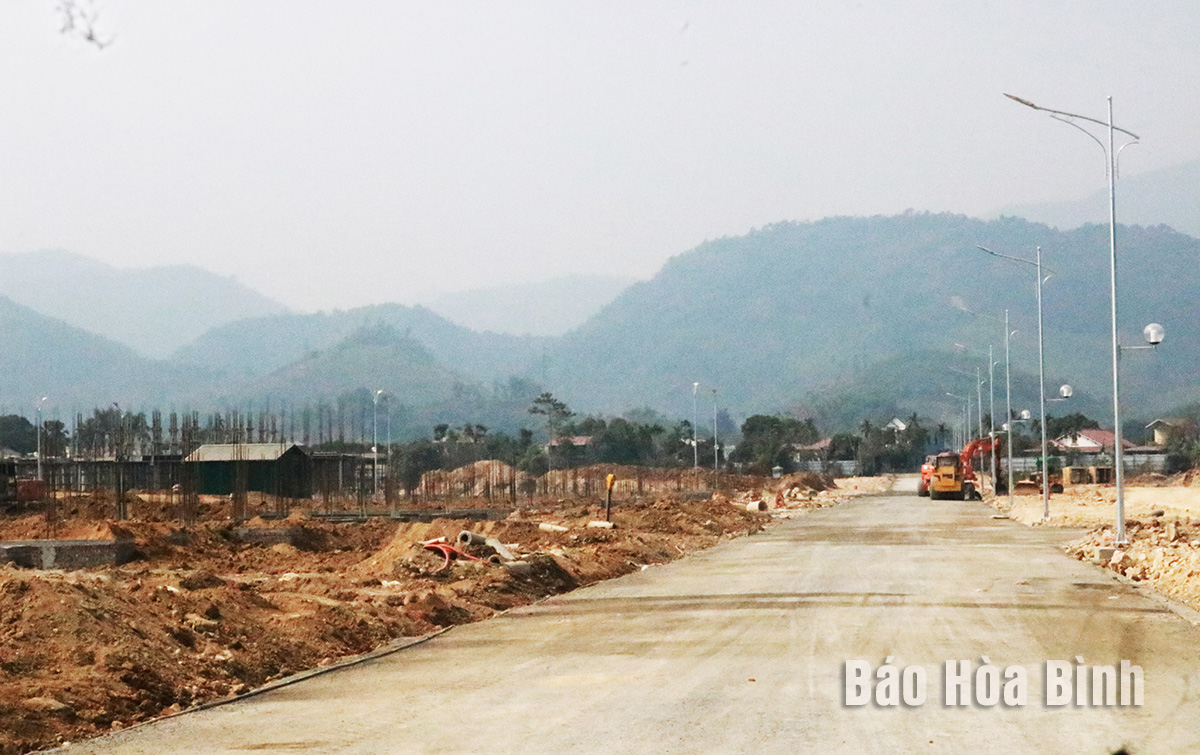
The tax sector of Hoa Binh province has proactively implemented key tasks and solutions since early 2025 to complete the state budget revenue target of 5.8 trillion VND (227.71 million USD) assigned by the Government and the Ministry of Finance; and 6.8 trillion VND set by the provincial Party Committee, People's Council, and People's Committee. Land-related revenue remains a crucial source in the locality’s state budget plan in 2025.
The Trung Minh A New Urban Area project in Hoa Binh city is a key
project that has contributed over 1 trillion VND to the state budget.
According to the provincial Tax Department, special attention
has been paid to closely monitoring collection progress, identifying potential
revenue sources, and proposing effective management solutions. Based on
analysis, evaluation, and forecasting, the department will pinpoint untapped
revenue sources and areas of tax loss, making recommendations to the provincial
People's Committee to improve collection efficiency and strengthen revenue
management.
For revenue from land use, to ensure effective management of this domain,
relevant agencies are actively coordinating efforts to review and
comprehensively manage all collections. Attention has been paid to
managing businesses with land lease projects; reviewing and compiling a list of
projects due for land rental price adjustments; and ensuring timely issuance of
new land rental rates as a basis for managing land-related revenue in the
province.
In 2024, thanks to the effective implementation of tax management measures, the
locality’s land use fee revenue hit approximately 2.8 trillion VND, surpassing
the Government’s target by 240% and that of provincial People's Council by 40%,
and surging by 87.8% compared to 2023. The 2024 state budget revenue recorded
the highest level ever, reaching nearly 7.56 trillion VND, exceeding the target
assigned by the Prime Minister by 87%, and 50% higher than the previous year.
In January 2025, the province's socio-economic situation showed
many positive signs, raising expectations for strong development and creating
important momentum for achieving the state budget revenue target in 2025.
The wholesale revenue exceeded 2.35 trillion VND, up 15.41% year-on-year. Total
retail sales increased by 17.48%; revenue from lodging and catering services
rose by 7.68%; and the industrial production index grew by 2.82%.
The province’s state budget revenue in January
was over 1.37 trillion VND, more than doubling compared to the same period last
year and equivalent to 19.43% of the target set by the provincial People's
Council.
To achieve the 2025 state budget revenue target, the local
authorities will implement decisive and comprehensive measures to manage and
increase revenue, focusing on mobilising tax, fee, and charge revenues while
effectively implementing taxpayer support policies.
Priority will be given to revenue from land and mineral resources, attracting
investment, improving the business and investment environment, and promoting
economic growth.
According to data from the Hoa Binh Provincial Party Committee, the industrial production index for the first six months of 2025 is estimated to have increased by 20% compared to the same period last year. This marks the highest year-on-year growth rate for this period since 2020.
In the first six months of 2025, Hoa Binh province’s export turnover was estimated at 1.145 billion USD, marking an 18.11% increase compared to the same period in 2024. Import turnover was estimated at $ 804 million, a 17.15% increase, which helped the province maintain a positive trade balance.
The lives of the ethnic minority farmers in Tan Lac district have gradually improved thanks to the new directions in agricultural production. This is a testament to the collective strength fostered through the professional associations and groups implemented by various levels of the district’s Farmers’ Union.
With the motto the "product quality comes first,” after nearly one year of establishment and operation, Muong village’s Clean Food Agricultural and Commercial Cooperative, located in Cau Hamlet, Hung Son Commune (Kim Boi district), has launched reputable, high-quality agricultural products to the market that are well-received by consumers. The products such as Muong village’s pork sausage, salt-cured chicken, and salt-cured pork hocks have gradually carved out a place in the market and they are on the path to obtaining the OCOP certification.
In the past, the phrase "bumper harvest, rock-bottom prices" was a familiar refrain for Vietnamese farmers engaged in fragmented, small-scale agriculture. But today, a new spirit is emerging across rural areas of Hoa Binh province - one of collaboration, organisation, and collective economic models that provide a stable foundation for production.
Maintaining growing area codes and packing facility codes in accordance with regulations is a mandatory requirement for agricultural products to be eligible for export. Recently, the Department of Agriculture and Environment of Hoa Binh province has intensified technical supervision of designated farming areas and packing facilities to safeguard the "green passport" that enables its products to access international markets.



